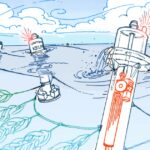In today’s report– Markets: $350M for Morocco’s Blue Economy
Epic: Breaking down seaweed biostimulants
Fireside chats: 7 Tips to Ensure Hits
Around the web: Using Mexico’s coastal seaweed infestation to create alternative fuels, pharmaceuticals, and food

“Take the first step. That’s the most important piece of advice I’d give to someone in this space” — Frej Gustafsson, ReShore
Dear algae technologists,
Hello and welcome to The Paxtier Report for Wednesday, May 25th 2022!
To start this email, let me draw your attention to Professor Peter Ralph’s state-of-the-art algal phenomics robot:
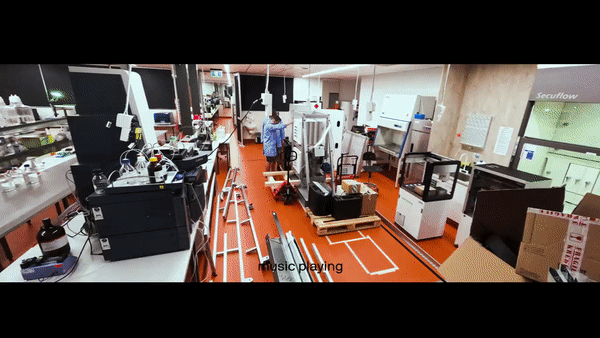
With this device, the UTS Phenomics team hopes to perform high throughput screening of algae for novel traits, and “transform industries currently dependent upon modest yields from wild-type strains.”
In today’s report:
Markets: $350M for Morocco’s Blue Economy
Epic: Breaking down seaweed biostimulants
Fireside chats: 7 Tips to Ensure Hits
Around the web: Using Mexico’s coastal seaweed infestation to create alternative fuels, pharmaceuticals, and food
Check this out here.
Markets and Investing
⭐ The World Bank Backs Blue Morocco
The World Bank announced Tuesday the approval of a 350-million-U.S. dollar loan to support Morocco launching a blue economy programme.
With this funding, the country hopes to level up in three key areas: job creation, economic growth, and sustainability.
And how do they plan to use this money?
Firstly, by developing institutional frameworks to facilitate improved coordination, collaboration, and execution.
And secondly, by investing in key blue sector activities like sustainable tourism, and the protection and management of ecosystem services. This will involve implementing:
- Marine surveys – to estimate the health of fish stocks.
- Environmental monitoring of beaches – to attract coastal tourism.
- Satellite surveillance – for checking coastal erosion.
- And 14 new aquaculture farms (incl. shellfish and seaweed farms) – to create more jobs and provide a more sustainable food source.
Why invest in the blue economy?
📉Chart
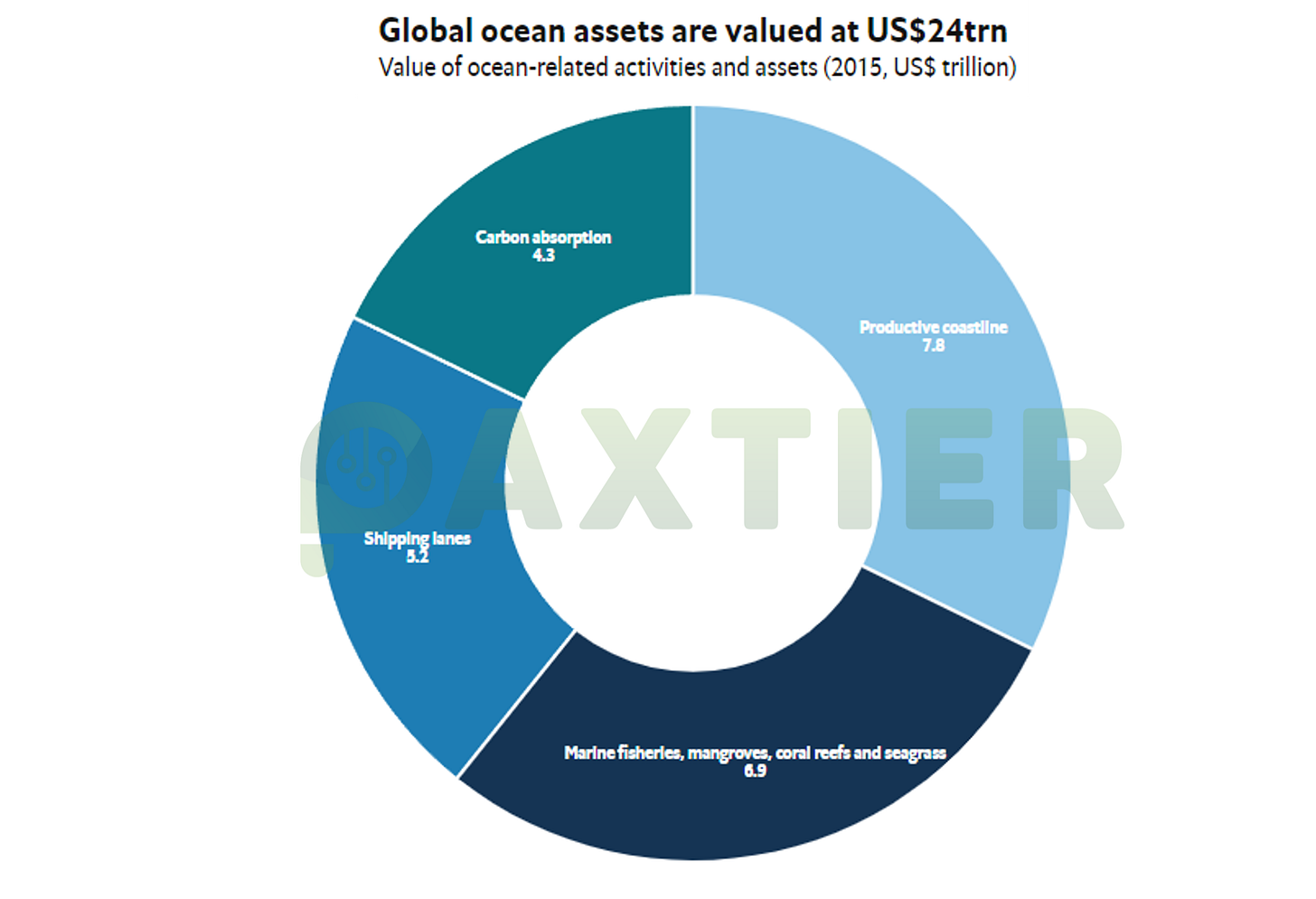
Given the immense value of global ocean assets (Figure 1), Morocco knows full well the importance of protecting its underwater environment.
But does this merit a $350M loan?
Here’s how Marcelo Hector Acerbi, Senior Environmental Specialist and Task Team Leader justified the decision:
Given the wealth of its marine and other shoreline assets, Morocco’s coast offers opportunities for job creation and an equitable recovery from the pandemic, as well as for increasing its resilience in the face of climate change.
The Blue Economy program is a platform aiming to bring together different sectors and regions to design and implement integrated solutions to manage marine and coastal resources efficiently. By doing so, the program supports an equitable and sustainable society.
✂️Algae Market Snippets
Some other big moves this week:
- Granot Cooperative Association is making its first investment of $3M in BarAlgae. The company specialises in growing microalgae for use as animal feeds, cosmetics, anti-aging creams, and food additives. (Read more HERE)
- Shark Tank: On Friday’s episode of ABC’s “Shark Tank,” Mark Cuban and Kevin Hart struck a $600,000 deal with The Transformation Factory, which sells edible sea moss gel. Transformation Factory “wild harvests” its seaweed from the ocean waters around Jamaica. (Read more HERE)
- Biden bounces back: A keystone project for Everglades restoration is getting a $265M boost from the Biden administration, which could jump-start construction for the Everglades Agricultural Area Reservoir Project. The funding will hopefully help control yearly blue-green algae explosions which kill fish and sour the tourism industry.
- The Croatian company Phyox has invested 6.6M euros ($7M) to expand micro-algae production in the town of Novska, eastern Croatia. It aims to produce and export 40 tonnes of micro algae annually for the pharmaceuticals industry, (Read more HERE)
- ECHEM has signed a memorandum of understanding (MoU) with Riga Green; a UAE-based company, for the production of algae oil. (Read more HERE)
- Collabs: Festo and Q.ANT are entering into a strategic partnership to cultivate biomass on an industrial scale. The two companies aim to achieve this by using a combination of algae, automation, and quantum technology.
- New projects: Corinna Bellizzi announced the launch of Örlö – an algae company creating sustainable omega-3 in an aquaculture planthouse in Iceland.
- Zaara Biotech bagged more cash from Transcend International to take their algal-seaweed culturing technology global. The move will create a new enterprise- Zaara Biotech International – which will operate solely in the US. (Read more HERE).
- Nutri-Sanreceived a grant from Algae-UK to deepen its collaboration with The University of Kent and to develop seaweed as a climate-smart solution.
- Premium Plant-Based Supplement Company PlantFuel has partnered with DICK’S in the US to expand its sales of products incl. “Daily Immunity + Hydration” (calcified sea algae supplements) (Read more HERE)
In depth with Peter Green
💬 Community Fireside Chats: 7 Tips to Ensure Hits
In this week’s section, I thought I’d share something a little different: 7 important lessons learned from my fireside chat series.
Below you’ll find the 7 most recurring answers (and some examples) given by investors, founders and researchers when I asked them for their top tip for fellow algae technologists.

- Patience is a virtue.“This is a long-term build and involves systemic change. It’s challenging because the seaweed sector is such a slow-moving area, particularly in Australia. To work around this, one of the best things I did was talk to everyone around the country working with macroalgae. It’s such a great way to gather information and uncover opportunities.” Jo Kelly, ASI
- Collaborate and connect to move forward. “Find the right people around you and don’t try to do this by yourself. Share, share, share your knowledge and your questions.” Joost Wouters, The Seaweed Company
- Take massive action right now. “The only way we’re going to tackle this is by doing things. Climate change is a wicked problem, and it requires a holistic solution. Whether it’s seaweed or something else, go out and do something positive!” Adam Brancher, The SOCC
- Seek patient financial support. “For deep tech, patient capital can make all the difference. Finding people who are willing to take this slower approach is important.” Raffael Jovine, Brilliant Planet
- Put yourself and your work out there. “Expose yourself to as many opportunities as possible. Whatever that might mean in your context, put yourself out there. You can’t be found if you don’t put a signal out.” Imche Fourie, Outset Ventures
- Focus on why. “Focus on why you are doing these things, and what intrinsically drives you to carry on. Building in this area is hard, and an antidote for this is to hold on to a clear why.” Romain Diaz, Satgana VC
- Prioritise and stay focussed. “There are so many things to tackle in this space, but you can’t do them all at once. If you want to make a difference, you should start by contributing in the small ways and with the things you’re good at.” Otto van der Linden, SEASEEDS
📝Research Rundown: Breaking down seaweed biostimulants
THE BIG IDEA
For generations, humans turned to seaweed as a biostimulant and fertiliser for their crops.
But why it had such an effect on their produce remained somewhat unclear…
… Until Ali et al. released a breakthrough paper in May 2022, which explored how algae can metabolically influence tomato plant productivity.
Results
For this investigation, the team added Stimplex (a commercial A. nodosum extract) to tomato plants over a 72 hour period.
And after this, they performed transcriptomic analysis, which uncovered something quite special:
A complete change in tomato plant metabolism. Specifically, the up-regulation of 635 genes, and down-regulation of 456 other genes.
Which genes?
According to the paper, “Ontology enrichment analysis showed three gene categories were augmented, including biological processes, cellular components, and molecular functions” (see Figure 1).
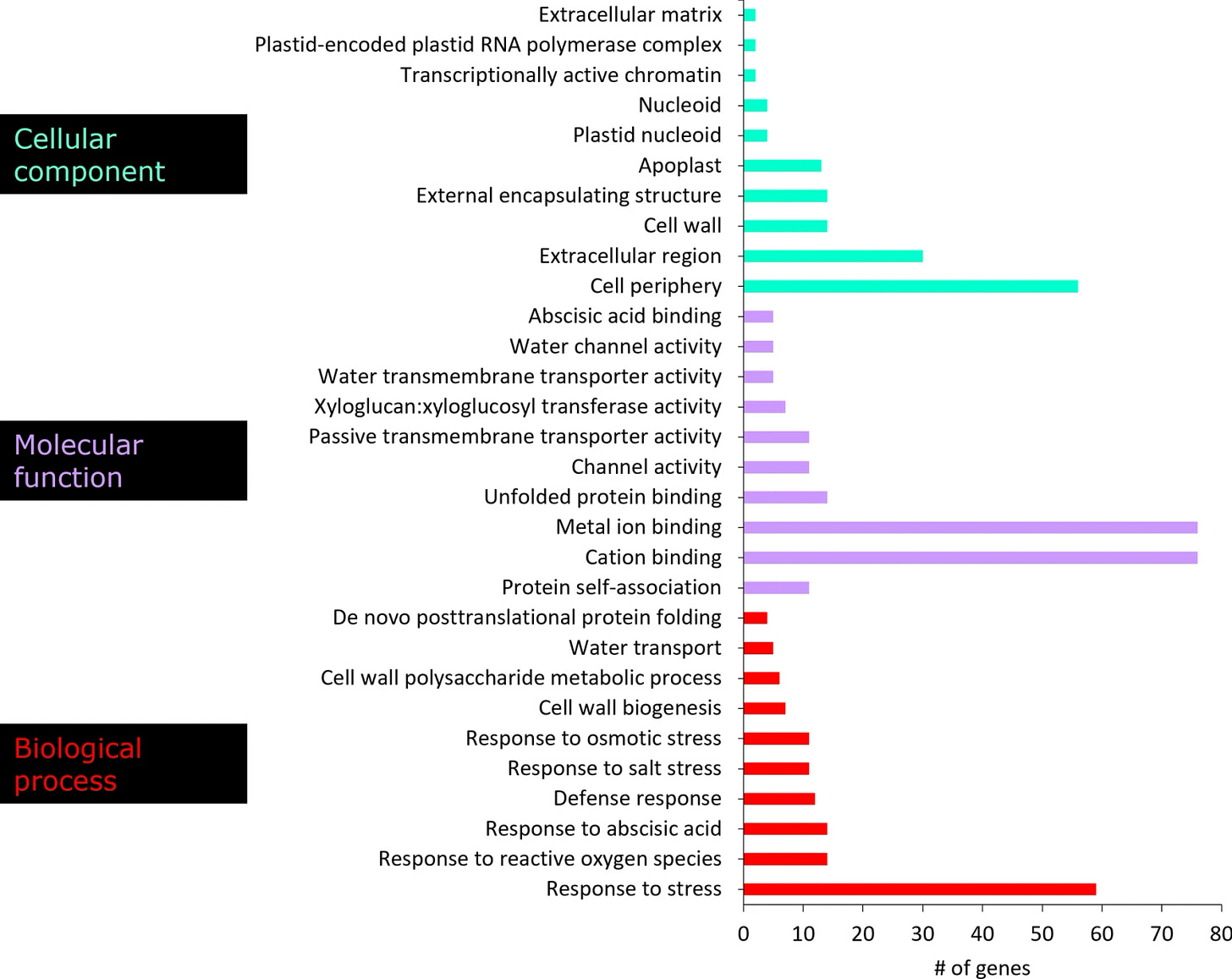
And KEGG pathway analysis revealed that the extract had a strong influence on the expression of genes involved in:
- Carbon fixation,
- Secondary metabolism,
- MAPK-signalling,
- Plant hormone signal transduction,
- Glutathione metabolism,
- Phenylpropanoid and stilbenoid metabolism, and
- Plant-pathogen interactions
See Figure 2 for a visual representation of these pathways.
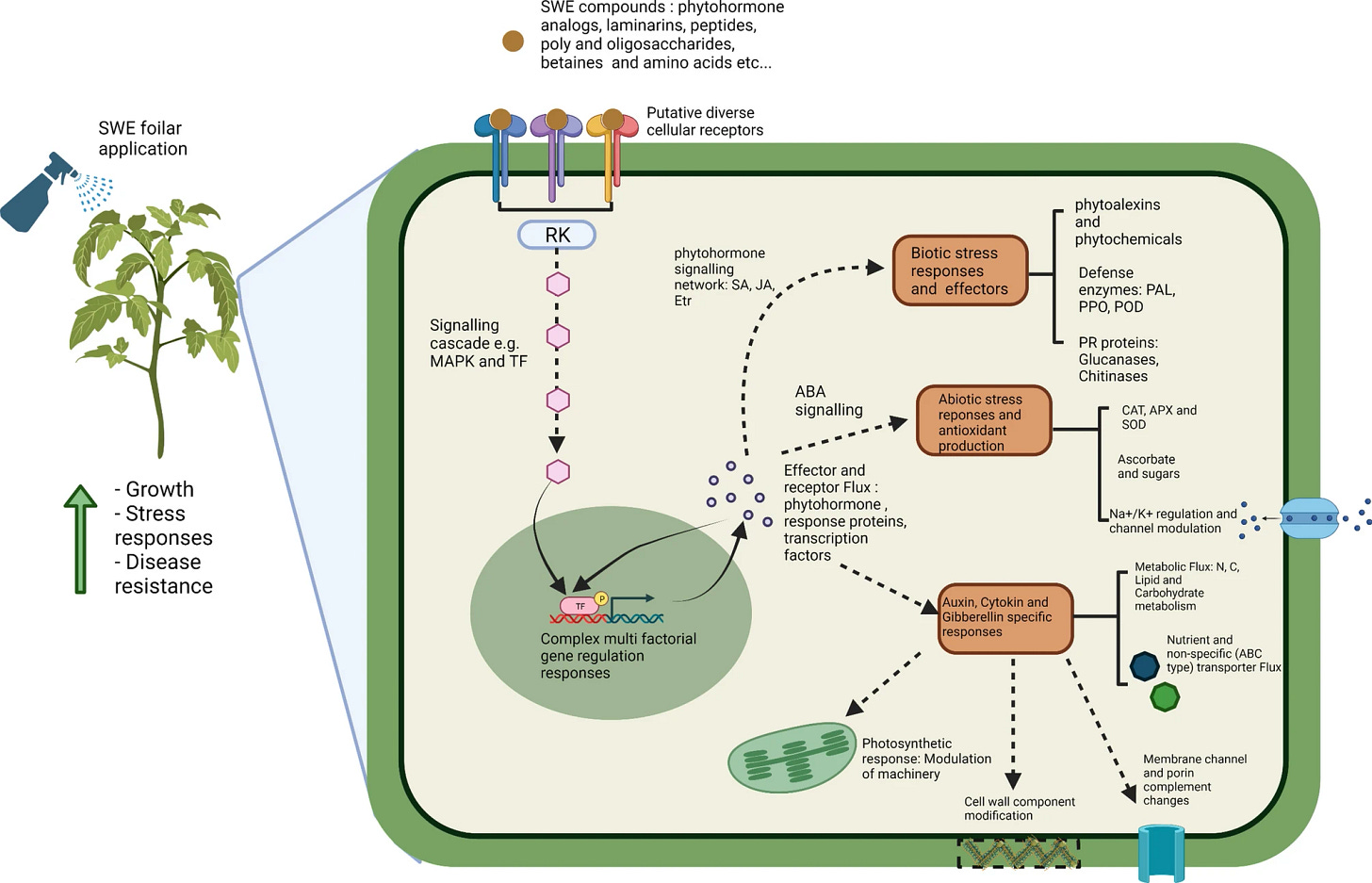
With these findings, the team link the use of seaweed extract to favourable plant growth and stress resistance. They also show support for the continued use of Stimplex as a biostimulant for plant crops around the world.
As the manufacturer of Stimplex, it’ll be interesting to see how Acadian Seaplants integrate these findings into their product marketing.
At present, the firm sells its extracts to farmers in more than 80 countries (for 70 different crop types), and we can see this research going down well with buyers.
🔥 What else was hot in algae-tech this week?
- North Sea Farmers welcomed their newest member: Origin by Ocean. Origin by Ocean, founded in 2019, is a platform-based algae refining company. Their patented biorefining process makes it possible to extract valuable bio-based chemicals from harvested invasive algae and ecologically farmed seaweed. The organic algae-based products can substitute conventional chemical ingredients in food & beverage, cosmetics, hygiene, textiles and many other goods and materials. (Read more HERE)
- Using Mexico’s coastal seaweed infestation to create alternative fuels, pharmaceuticals and food – Dr Emily Kostas (UCL Biochemical Engineering) used Global Engagement Funds to collaborate with peers in Mexico to discuss biorefining seaweed to create alternative and sustainable bioproducts.
- (Paper) Modelling the pyrenoid-based CO2-concentrating mechanism provides insights into its operating principles and a roadmap for its engineering into crops (Nature)
- Meet the guy who wants to help save the planet with thousands of blue buoys, seaweed and giant antacids (Read more HERE)
- As NASA prepares to return to the Moon through Artemis, teams at the agency’s Kennedy Space Center in Florida are working to send much smaller life forms to space to help scientists better understand the effects of space radiation before humans return to the lunar surface. NASA’s Space Biology Program selected four biology experiments to fly as part of BioExpt-1, which involves using plant seeds, fungi, yeast, and algae to study the effects of space radiation before sending humans to the Moon and, eventually, to Mars. (Read more HERE).
- Seaweed snack innovator creates ‘underwater garden‘ to build sustainable blue business – When Ash Sutton realised the seaweed growing on his farm off the West Australian coast had a similar texture to lolly snakes, he started thinking about his next business move.
- (Paper) Operationalizing marketable blue carbon (CellPress.com)
- How seaweed agtech can ease the fertiliser crisis– KZO Sea Farms joined the seaweed cultivation sector at a time of rapid industry growth. Between 2004 and 2015, global production increased at a rate of 7.6 percent a year. Seaweed farms around the world now harvest around 51.3% (34.7 MMT wet weight) of total marine aquaculture yield. While Asian aquaculture dominates the scene, KZO Sea Farms predicts that the East African coast could become a major cultivation site. The company plans to establish offshore cage-based farms off the coasts of Kenya, Tanzania, and Mozambique as part of large, vertically integrated ‘mariculture parks’. (Read more HERE)
- NOAA seeks to nail down California’s offshore aquaculture opportunity areas- Members of the public are being invited to help shape Blue Aquaculture Opportunity Areas and offshore aquaculture development in Southern California.
- HUM Nutrition debuts 2-step prenatal system – Key ingredients include vegan DHA from algae to support optimal brain, visual and overall health in babies; choline to supports baby’s brain and spinal cord development; and a form of chelated iron that is highly absorbable and gentle on the stomach. (Read more HERE)
🐦Tweet of the week
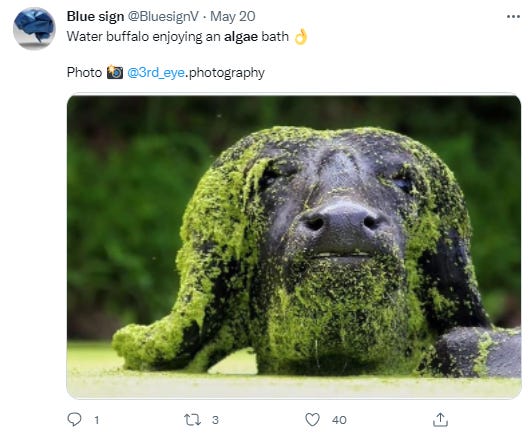
11. Last week, Sustainable Ocean Alliance co-hosted the 2022 Ocean Pitch Challenge with RespectOcean to develop and promote viable solutions for oceanprotection. The 3 winners of the 10 finalists of the challenge were:
- FINSULATE France, an ocean-friendly solution to prevent marine organism growth on maritime vessels and SOA Accelerator Alumni.
- Algae to House, a student-run project to turn sargassum seaweed waste into bricks for construction in the Caribbean.
- Bonvent!, a solution that solves the logistical challenges of recycling and repurposing end-of-life boats.
Jobs
(LINK HERE)🌱 Multiple Positions at Bigelow Laboratory – Maine
(LINK HERE) 🌿Research Associate: Bio Engineer – C3 UTS Sydney
Events
Drop us a message if you’re free for a catch-up at London Tech Week!
That’s all folks!
Thanks again for joining us this week. Hope you have a great day and stay tuned for more algae tech updates soon!
Peter


